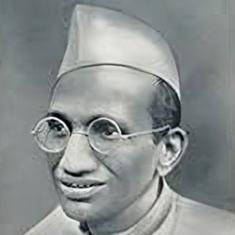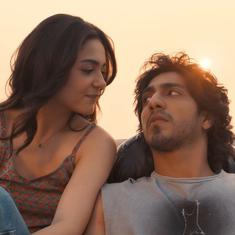Twenty-five years ago, on December 6, 1992, we watched the dome of the Babri Masjid crumble while the kar sevaks hammered it down with whatever was close at hand. It seemed unreal, almost like a dream. As the dust of the Babri Masjid settled, and for those of us who were too young to comprehend the enormity of its political history, we began, in many ways, however slight, to feel like outsiders due to a rhetoric that would soon raise its head. Once summarily dismissed as outsiders, we began to be told that some of our stories could no longer belong to us.
The visual language – an army of men who marched behind a truck disguised as a chariot, bearing an image of a muscular, ascetic, armed Rama, superimposed on a saffron background – that led up to this incident and propelled it, was one that was based on the narrative of an epic at whose centre lay the complex negotiations of dharma. Although the rhetoric of this particular campaign propounds binaries – good and evil; inside and outside; us and them – the discourse that surrounds the narrative epic in its several and widespread retellings through antiquity is considerably more intricate. What this campaign’s rhetoric exclude are intricacies of love and its loss, existential crises of the self, duty and dharma, and metaphors and poetry:
“It is springtime, resounding with birdsongs of every kind, only inflames my pain, Saumitri, for I am without Sita. Overcome by grief, I am tormented by love, while the joyous cuckoo raises its voice, calls out to me.”
— The Ramayana of Valmiki, Kiskindhakanda, translated by Rosalind Lefeber.
Setting the narrative
In the 1980s we began every weekend with an oral narrative of a televised kind.
Ramanand Sagar’s Ramayan, broadcast over the lone national network, had taken over almost every television set in the nation, some watched, others worshipped. Interestingly, the televised series that broadcast seventy-eight episodes began with a disclaimer: “Mainly based on Ramcharitmanas by Goswami Tulsidas and Valmiki Ramayan”. It then goes on to highlight the other sources, which include Kamban’s Tamil Ramayana, the Marathi Bhavarath Ramayana by Sant Eknath, Krittivasa’s Bengali Ramayana, the Telugu Rangnatha Ramayana, the Kannada Ramchandra Charit Puranam, the Malayalam Adhyatma Ramayana, Chakbast’s Urdu and the Hindi Radheysham Ramayan. Why was this dramatisation of the Ramayana and its inclusion of many Ramayanas acceptable?
![Ramayana Panel in Ellora, 600-1000 Century. Photo Credit: Sarah Welch/Wikimedia Commons [Licensed under CC-BY-2.0]](https://sc0.blr1.digitaloceanspaces.com/inline/857413-1600px-A_relief_summary_of_Ramayana_at_Hindu_temple_cave_16_Ellora_India.jpg)
Its depiction of Ayodhya looked like the stuff dreams were made of, with fantasy representation of palace life, gilded courts and faded sheer curtains. Sita barely said anything, always in the shadow of Rama the righteous, whose arrows took fifteen minutes of screen time to reach the other side. For probably the first time, an Indian audience was able to cut through the class divide and watch the same unfolding of the great epic. It captured our imagination and loosened our structures, allowing families to watch an unfolding of events over a period of seventy-eight weeks. The strength in the seen blurred the distinction between the real and the make-believe, where the actors became the embodiment of the mighty characters of the epic that they played.
What the televised Ramayan did was appropriate a diversely owned and retold story, and simplify it until it became an authoritative Ramayana. Historian Romila Thapar warned of the danger it presented by favouring one version over others. It became in many ways the touchstone of the narrative, the way we saw the Ramayana, not how we looked at it.
A history of silencing
Less than a decade later and a year after the Babri Masjid came down, the Sahmat Trust organised an exhibition on the many Ramayanas, titled Hum Sab Ayodhya, depicting the historical, geographical, religious, architectural and cultural evolution of the site. The exhibition also contained panels, among which were Buddhist representations of the Ramayana, where Rama and Sita are siblings. Within three days, the panels and the exhibition were destroyed.
Later in that decade, MF Husain caused a stir with his depiction of an unclothed Hanuman rescuing an unclothed Sita on his tail. Husain had created this in the 1980s, a part of similar prints he had created for display during the Ramlila programmes run by socialist groups in the 1970s. When an exhibition with this work was displayed in Delhi in early 2000, people found it offensive, sexual, and the tail too phallic a symbol for the chaste Sita. Following protests by right-wing groups over his work and his representation of the unclothed Saraswati, Husain felt driven out of India in 2006 and died in London five years later. He never returned to India.
In 2004, a filmmaker from the United States worked on an animation of a text that she found became the representation of her own failed relationship. Sita Sings the Blues was a triptych of Ramayana narratives. Three Sitas, or three versions of Sita, took over the screen, tied together with a meta-narrative by Indonesian shadow puppets who remained as much in the dark about “the” Ramayana as many of us sometimes are.
In 2009, some right-wing groups began a campaign against the “offensive” portrayal of this Ramayana, claiming that it was created by “a Christian woman who hated Hindus”.
A K Ramanujan’s essay Three Hundred Ramayanas: Five Examples and Three Thoughts on Translations (1987) was the subject of vehement opposition from sundry groups since 2009. By 2011, the Ramayana unrest around the essay gathered momentum.
The questions raised by the opposing parties concerned the “scientific” veracity of the Kannada folk narrative version where Sita is conceived by Ravana who gives birth to her by sneezing. They felt the Thai Ramakien retelling, with its references to Hanuman as a ladies’ man peeping into the bedrooms of Ravana’s palace, was an insult to Hindu sentiments. They insisted that non-Hindu teachers would find it difficult to read and teach the essay, that women would find parts of it embarrassing. The central premise of their argument was that it exposed students to alternative ways of thinking. They also considered the book’s formally researched and evidenced study, transliterations, archival and interlocutions of many Ramayanas to be untrue.
Finally, in October 2011, following pressure from right-wing organisations, Delhi University’s Academic Council decided to drop the essay from the Delhi University BA syllabus, although not without extensive campaigning from teachers, students and activists against the move.
In 2014, Wendy Doniger ’s book The Hindus: An Alternative History (2009), was accused of being “anti-national” and its language “abusive”. Her agenda, as stated by the president of the Shiksha Bachao Andolan, “is to malign Hinduism and hurt the feelings of Hindus.” We were told that the book was in fact part of a conspiracy of pseudo-secularists who were the children of Karl Marx and Thomas Macaulay. The book disappeared off the bookshelves.
Whose Ramayana is it anyway?
The systematic breakdown of pluralistic traditions that surround Hinduism and specifically the Ramayana is evident. The destruction of a geographical node closes up the debate on how far we can or cannot go to inhabit spaces of the Ramayana, and towards a more forced engagement with an imagined place of the ideal state/nation – the Ramrajya, a concept that right-wing leaders had hoped India would achieve under their leadership. A reading of the above list of bans and violence demarcates the lines between those who stand inside and those who stand outside the making of a singular narrative of the epic, an epic that by its very nature across time has always been pluralistic. To loosen the ties with pluralism is to close the conversations around a text and to keep it in the hands of those who claim to know it. They exclude not only intellectual discourse, but also groups: women, minorities, Dalits and tribal communities to name a few, who have, in the Ramayana’s long history, all contributed to the beauty of the epic.
The beauty of a myth is its ability to act as the mirror of the present. But reflections within such scale of antiquity and diversity are often inverted or further away from where they appear. By its very nature, a myth can be retold in several ways, some of which include the fabric of the story and sometimes just a thread of the story. The way we choose to tell it and the language we use will determine its course and possibly elicit a particular response from the audience. Language, however, is intrinsic to the speaker and so, we must ask the question: who, when, how and where is it being spoken?


The Ramayana as a political tool
In 2014, the BJP won the national elections and became one single party that had contested to lead India into the future, a future that was bright. A future in which India would lead the world by example, a future that it would, by right, own as it had done the past because it was India – or more precisely the myths and stories of Hinduism – that “discovered” plastic surgery, air travel, space travel, stem cell technology; where our epics could be drawn on as examples to re-present the present.
In the wake of surgical strikes in Kashmir in late 2016, at a Ram Leela performance, we were told to be like Jatayu, the huge, semi-divine vulture king, who was the “first” to fight terrorism when he attempted to free Sita from the ten-headed demon, Ravana. If we citizens role play Jatayu in this geo-political time, the question then is who signifies the helpless Sita? Ravana has, we are told, raised his head everywhere and his character is placed alongside the terrorist, the outsider, the intruder, with his ten heads and dharma that is not quite the same as ours, whose flaw in the classical epic is his hubris. This repackaging of Ravana as signifying evil misaligns the depth of the Ramayana epic. However, the bigger question to be asked is: who signifies Rama?

Perhaps it is good to remember, at this moment, a story from the Adbhuta Ramayana, a text difficult to date but believed to have been written in the 12th/13th century or even as late as the 16th century, that interweaves Sanskrit and folk narratives. The Adbhuta tells of another kind of Ramayana, one where the defeat of the ten-headed Ravana is only one of the other Ravanas that exist. When Rama learns of the thousand-armed Ravana he rushes into the scene of battle but is struck down by an arrow. Sita, unable to contain her grief picks up Rama’s bow and arrows and rushes into the battlefield with a blood-curdling cry.
Abandoning her demure form, her eyes bloodshot with rage, her neck adorned with skulls and her ankles with bone, she is now Mahakali, and she launches herself with a terrifying roar onto Ravana’s chariot. With a single stroke, she cuts off his thousand heads and then, spinning around, she calls the mothers of the earth to enter the battlefield. They do, and together they kill every rakshasa in sight, laughing as they fight, tossing the severed heads like playthings, until the battlefield shimmers darkly with blood.
By positioning a myth in a position of reverential power, spoken to tens of thousands of people, how is this narrative being reductively appropriated and how are we being asked to read and interpret it? The relationship of what is spoken with power cannot be separated, because the speaker speaks not of himself in first person but under the guise of the narrator of a plebiscite he represents. More importantly, who knows the stories that are told, and by telling them whom are we excluding? The danger of a single story is the closing of doors, with a bouncer admitting only the chosen and excluding everyone else.
The Laxshman Rekha, a culturally known signifier of a charmed boundary of protection that was etched around Sita to provide her cosmic protection her while the brothers went in search for the golden deer she was bewitched into coveting, is often used to delineate debate on women’s rights, freedom of speech, migration and trades across the national borders, regional borders, debates between the courts of justice and the houses of parliament. Besides the sexism and othering that the Lakshman Rekha comes to occupy, it also begins to institute new meaning as to what constitutes the inside and who stands on the outside. Leaving the homogenous, warm spaces of the inside for the dark, dangerous outside has unknown consequences. Who draws the line and who determines where and how the line must be drawn? Perhaps we are too quick to end the metaphor just as we see fit, forgetting instead that Sita chose her duty over her self. However, it is even more puzzling, given the rejection of the many Ramayanas, the we would use a term that exists in a 15th century folk story from Bengal, a concept that does not exist in either the Valmiki or for that matter, the Tulsidas Ramayan, a text that this government administration purports to be the “truest” Ramayana.
In Parliament, MPs are asked to be like Hanuman, who is, in popular iconography, seen at the feet of Rama and Sita – an embodiment of devotion. One of the most loved characters in the epic, Hanuman is loyal, fierce, and resolute, speaks perfect Sanskrit and can change his form at will. But as a child, he was cursed with forgetting, which at times makes him despondent and confused.
The question again, is who signifies Rama in the administrator’s retelling?
The reiterating of the single Rama narrative in the political sphere keeps the geographical node of Ayodhya, the destruction of the Babri Masjid, the contentious Ram Janmabhoomi, alive in the memory of the people. If we imagine the nature of memory to be a series of concentric but fluid circles, the self finds itself at the very core, the family in the next, the state and the nation at the outer realm. The notion of memory approached from the outer ring for what has come to be understood as “national”, the preservation of a “cultural heritage”, through the semiotic relationship of a particular geographical node moves closer and into the inner circles of self and consciousness. The reiteration of the “fight for cultural freedom” layers the implications of this by placing the act as responsibility and the action as violence. The notion of “nation”, “culture” begins to camouflage the rhetoric. And the positing of political language that draws from a single reading of the epic, paves the way for a deeper engagement with othering, of us versus them, of good over evil.
The beauty of plurality
Is there “a” Ramayana? A text which tells us the true story? A text that has one kind of Lakshmana or one kind of Hanuman? The Ramayana is not a single story; it is an ocean of stories, an ocean that is as wide as it is deep. To claim the Ramayana through the rhetoric of exclusion is to imagine the it as an island. But as we know, islands can be reached by building a bridge.
There is a wonderful story that goes something like this…
In the forest, late at night, Anjana holds her son in her arms and sings to him so he may fall asleep. Her song is a tale about the mighty Rama and she sings the Ramayana to her son, Hanuman. Every night Anjana tells Hanuman a little more of the Ramayana and the young monkey becomes so absorbed in it that he waits for the sun to set so he can hear some more. As time passes Anjana reaches a part in her great tale about the time Rama met Hanuman. The little monkey now began to get quite confused.
“But mother,” he says, “I am here, how can I be there?”
Anjana laughed and explained to her son that time was a wheel that moved endlessly through the ages, ending where it began, only to end again.
Hanuman was so taken with the story of Rama that he began to chant his name every day and sometimes he was so lost in thoughts of Rama that he would forget to eat. Anjana noticed this and told her son that only a strong monkey could take care of the mighty Rama. Hanuman, who by this time had become quite impatient, burst out: “But where is Rama now? Why can’t I serve him now?”
“My little monkey,” said Anjana, “the wheel of time has only just begun and Rama is a little boy just as you are a little monkey. When the moon has completed its cycles and many seasons have changed, Rama will find you and you will become the mighty Hanuman who burns a kingdom with his tail. But till that time has come you must let me finish my story.”
We tell stories to communicate. Sometimes these stories are about love, at other times they are about loss, but often they are cautionary tales that serve to warn us from repeating the fatal mistakes of others. To tell a story is to lighten the heaviness of slowly passing hours and to bring light into dark times. How ever we choose to tell a story we know and understand, it must be enveloped in some truth, real or imagined. As stories begin their journey through time, crossing borders and spaces, both private and public, they begin to take on the characteristics of the teller and the shades of the listener. The magnificence of the Ramayana is its ability to stand outside itself and yet to recognise itself, to never be a locatable node but to be a constellation that does not end at the horizon but dips far across its borders.
We have recreated this story in art, cinema, literature, poetry, dance, theatre, under banyan trees, at the feet of our grandparents, through comic books, in song, at bedtime and sometimes in our dreams. But we tell it because we know it. What is unusual is to not tell it. What is even more unusual is to tell it the way someone says you must. The Mappilas, who are Muslims, do not tell it the same way as the panels in Ellora; the Gond artists of Orissa do not represent it like the temple panels of Tamil Nadu; the Wadia production of Sampoorna Ramayana did not say it like G Aravindan did in his Kanchanasita.
But we tell it as we know it.
Imran Ali Khan is a writer and researcher based in Mumbai.
A version of this article first appeared on Schloss Post.










